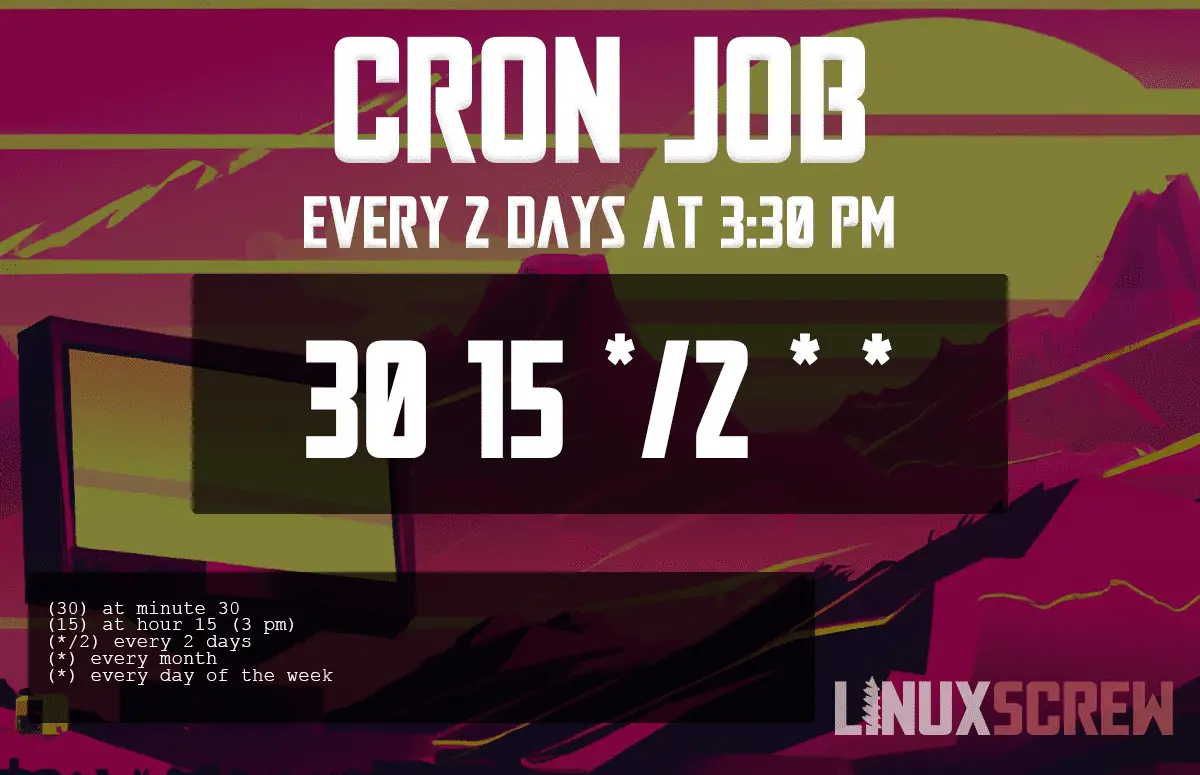This page will help you quickly and easily set up a cron job to run every 2 days at 3:30 pm.
The Cron Job/Crontab
To have your task run at this frequency, use the following cron:
30 15 */2 * *
This cron command translates to the following (in Human-Readable format):
“Every 2 days at 3:30 pm.”
What is a Cron Job & Crontab?
A cron job is a scheduled task that is typically executed automatically at a predetermined time or interval. Cron jobs are often used to perform routine system maintenance tasks, such as backing up files or databases, deleting temporary files, or sending email notifications.
A crontab is a file containing commands and instructions for the cron daemon to execute.
Cron Fields
Every cron job uses five fields. Here is an explanation of what each field does in this cron, which runs “every 2 days at 3:30 pm“:
FUN FACT: The most common way to edit cron jobs is using the crontab command – this stands for “cron table,” and it contains all the information about when your tasks should be executed..
Use Cases
You might want to set up a crontab or cron job to run every 2 days at 3:30 pm for several reasons, including:
- Run a backup script
- Perform maintenance tasks (e.g. delete old logs)
- Send out a daily report
Similar Cron Jobs
You might also want to run a crontab:
- every 8 days
- every 4 days
- every 3 days
- every 2 days
- every 1 day
- every 8 days at 6:30 pm
- every 10 days at 4:00 am
- every 6 days at 11:00 am
FUN FACT: When troubleshooting issues with cron jobs, it can be helpful to run them manually from the command line – this will allow you to see any error messages that might be generated..
Wrapping Up
In this article, you learned how to set up a cron job that runs every 2 days at 3:30 pm. Please share this page with friends and colleagues if you find it useful.
If you have any questions, please don’t hesitate to comment below.
If you are looking for cron jobs that run at certain minutes, hours, days, weekdays, or months, or if you are looking for miscellaneous cron jobs, then check out our relevant sections, or visit our crontab cheat sheet for a list of hundreds of popular cron jobs.

